QUESTIONS FOR CRAFTERS: A fine balance: Art and profit at the One of a Kind
zby Denise Ing
The hours before the start of the One of a Kind Show can feel like the calm before a storm. Inside the exhibition hall, craftspeople are in varying stages of preparation; some are acquainting themselves with their neighbouring vendors while others are still unpacking their creations from boxes piled high in the aisles. In spite of the music piped into the hall, the rumbling of eager shoppers crowded outside the entrance is audible and it’s enough to make even a show veteran’s heart beat a little faster.
More than 140,000 visitors are expected over the 11 days of the 2008 Christmas edition of the One of a Kind Show. Few other craft shows operate on the grand scale of the OOAK, which has built up a following of repeat customers over its 34 years. And, with a marketing budget of over $1,000,000 annually, the OOAK launches a craft promotion campaign aimed at the general public like no other.
Like many Show vendors, first timer, Amber Mills used to be a fan. “I’ve always loved coming, and the calibre of work here is so great that I just wanted to be part of it,” recalls Mills, “I came the last two years planning to eventually (exhibit) so I talked to other potters and they all said that it was a really good idea for me to come.”
Mills’s hand thrown pottery is featured in the Rising Stars section, reserved for artisans with less than three years professional experience, in which vendors pay $55 a square foot. “Everything was simpler, more cost effective, and that really is such a gift when you’re starting out,” says Mills, “You really have to be careful not to overextend yourself financially.”
“I do look forward to growing,” admits Mills, “But I am booked for the Rising Stars in the Spring, and then, from there, I will graduate into a booth.”
Four shows earlier, Chantelle Hodgkinson was also a Rising Star but this year, she has made the leap to having her own booth. Hodgkinson hopes that her line, little brown wren, featuring hand made bags and soft toys, will appeal to visitors, even those unfamiliar with craft.
“Generally speaking, most of the clientele that come here (anticipate) spending a fair amount of money,” says Hodgkinson, “That being said, I try to keep my prices fairly low. You do get the occasional (complaint that) this is a lot of money for (the product) but you just (explain) the cost of materials, the booth and the time, which I don’t (even) consider as a part of my costs but I know that I should. At the end of the day, you’re really not making a lot of money, but if you like what you’re doing, it’s worth it.”
With a minimum financial commitment of $1819 in order to occupy a booth space for the full duration of the show, the pressure to turn a profit can be high. When Meghan Parsons decided to show jack&marjorie, her line of hand crafted bags, at OOAK, she had not begun making a living off her work. Parsons remembers that the decision to do OOAK was “terrifying”.
“Talking to other people that had done (OOAK) in the past, everybody said, ‘You’ll make your money back, no problem.’ I didn’t really believe them but I thought that I better try.”
Currently returning for her fifth OOAK, Parsons has found a supportive base of buyers. “There’s a lot of great things about the show. Obviously, the number of sales that you can do in a short period of time is pretty great (as are) the clientele,” says Parsons.
”When I first did it, I was really concerned about the pricing, because the bags aren’t cheap. It’s quite different from something that you would buy from H&M. It’s a commitment for a lot of people to buy a $200 bag. Other smaller shows I’ve done, people would make comments about how expensive the bags are, but here, everybody’s really positive and knowledgeable about hand made items.”
One of a Kind Show ‘Hall of Famer’, Betty Van der Voort is happy to help bridge the knowledge gap that new visitors might have about craft practices. Having been an OOAK exhibitor since the beginning, Van der Voort has become the living embodiment of the Show; she has developed friendships with repeat customers and patiently builds a rapport with new ones.
“There is still a very strong educational component to what we do, People (who are) introduced to One of a Kind as a shopping venue may not have the experience to understand what time, effort and skill (a one-off piece requires) versus something popped out in a foreign country, and shipped over in box cargos,” explains Van der Voort.
Half of Van der Voort’s annual income is made at the Christmas One of a Kind Show. Each year, about 30% of the Van der Voort Woodworking products are new designs aimed at repeat customers. Van der Voort insists, “Good quality work never goes out of fashion, but (the customers) are still looking for something that they haven’t already given to someone special.”
Product innovation is also driven by Van der Voort’s need for artistic expression, purposefully unhindered by financial concerns. “I’ve done everything else in my personal world to try and maintain an environment that allows me freedom of expression here in my kiosk,” explains Van der Voort. This has meant maintaining a large garden to lower grocery bills, and heavily insulating her home in order to keep heating costs down. “I’ve organized (my life) in a way that I don’t have financial pressures on me,” says Van der Voort, “But that’s not true for most exhibitors.”
For David Greig of Wildhagen, the market drives product design; creating hats that reflect customers’ desires is a motivating factor for doing the OOAK, in spite of having a flagship store in Toronto. “The One of a Kind was great to meet our clientele, and to design for real people rather than speculating on the kinds of hats that people might like,” says Greig, “With the volume of people coming through, it’s a fair cross section of your potential market.”
“(A)nother reason we like dealing directly with people, is that, as long as you can keep in touch with the buying public, you have an income.”
In recent years, Wildhagen has turned to outsourcing their manufacturing as Greig and his wife attempt to focus more on design. However, Greig is adamant that their hats belong under the category of craft. “It’s the integrity of the design and the limited production runs,” Greig explains, “At a certain point, it’s a waste of our time (if) we’re always sitting in front of machines, producing stuff. That’s taking up invaluable design time, and it only makes sense that we would want to employ others to help us with that aspect of the labour.”
Production and labour costs may once have preoccupied ceramic artist, Wendy Walgate but, in spite of a “harried” booth set up, Walgate has a relaxed approach to her first One of a Kind Show. “I’ve been dealing with a U.S. gallery mostly, and I find my studio a little bit isolating, so I thought that it might be good to just get out there and talk to people about my work,” explains Walgate.
“If I sell something, that’s fabulous, but I needed to get out, I needed to get feedback, and I needed to show my work. So far, the feedback’s been great from the media and from people in general.”
Having worked in ceramics for over 20 years, Walgate has experienced the opposing pulls of profit and artistic vision. When her production ceramic business brought about carpal tunnel syndrome in her hands, Walgate took the opportunity to change her work methods and focus on sculpture.
“I became very bored with doing functional pieces. I believe that there are some extremely talented people that do functional work, and that’s what they should be doing. It’s just that it wasn’t in my heart to continue on with it. I had to move to something else that was more about an expression of my feelings about this world,” says Walgate.
A few aisles away and more than a decade removed in craft experience, Parsons continues to balance artistic vision with the need to turn a profit in her craft. “There are certain things I won’t do, just for the money,” states Parsons, “In terms of certain styles, when I’m designing, I have to (be aware of) what sells. There are things that I like that just don’t sell, so maybe I’ll make one for me or for a friend; do it more as a hobby or for fun.”
“I think you have to separate things in your head that way, which is fine. I don’t feel oppressed by it or anything; it’s just part of doing this sort of thing as a business. So far, I haven’t had any real moral dilemmas and I hope I don’t have to.”
:::::::::::::::::::
A former glassblower, Denise Ing is now a freelance writer and an avid supporter of craft.
The hours before the start of the One of a Kind Show can feel like the calm before a storm. Inside the exhibition hall, craftspeople are in varying stages of preparation; some are acquainting themselves with their neighbouring vendors while others are still unpacking their creations from boxes piled high in the aisles. In spite of the music piped into the hall, the rumbling of eager shoppers crowded outside the entrance is audible and it’s enough to make even a show veteran’s heart beat a little faster.
More than 140,000 visitors are expected over the 11 days of the 2008 Christmas edition of the One of a Kind Show. Few other craft shows operate on the grand scale of the OOAK, which has built up a following of repeat customers over its 34 years. And, with a marketing budget of over $1,000,000 annually, the OOAK launches a craft promotion campaign aimed at the general public like no other.
Like many Show vendors, first timer, Amber Mills used to be a fan. “I’ve always loved coming, and the calibre of work here is so great that I just wanted to be part of it,” recalls Mills, “I came the last two years planning to eventually (exhibit) so I talked to other potters and they all said that it was a really good idea for me to come.”
Mills’s hand thrown pottery is featured in the Rising Stars section, reserved for artisans with less than three years professional experience, in which vendors pay $55 a square foot. “Everything was simpler, more cost effective, and that really is such a gift when you’re starting out,” says Mills, “You really have to be careful not to overextend yourself financially.”
“I do look forward to growing,” admits Mills, “But I am booked for the Rising Stars in the Spring, and then, from there, I will graduate into a booth.”
Four shows earlier, Chantelle Hodgkinson was also a Rising Star but this year, she has made the leap to having her own booth. Hodgkinson hopes that her line, little brown wren, featuring hand made bags and soft toys, will appeal to visitors, even those unfamiliar with craft.
“Generally speaking, most of the clientele that come here (anticipate) spending a fair amount of money,” says Hodgkinson, “That being said, I try to keep my prices fairly low. You do get the occasional (complaint that) this is a lot of money for (the product) but you just (explain) the cost of materials, the booth and the time, which I don’t (even) consider as a part of my costs but I know that I should. At the end of the day, you’re really not making a lot of money, but if you like what you’re doing, it’s worth it.”
With a minimum financial commitment of $1819 in order to occupy a booth space for the full duration of the show, the pressure to turn a profit can be high. When Meghan Parsons decided to show jack&marjorie, her line of hand crafted bags, at OOAK, she had not begun making a living off her work. Parsons remembers that the decision to do OOAK was “terrifying”.
“Talking to other people that had done (OOAK) in the past, everybody said, ‘You’ll make your money back, no problem.’ I didn’t really believe them but I thought that I better try.”
Currently returning for her fifth OOAK, Parsons has found a supportive base of buyers. “There’s a lot of great things about the show. Obviously, the number of sales that you can do in a short period of time is pretty great (as are) the clientele,” says Parsons.
”When I first did it, I was really concerned about the pricing, because the bags aren’t cheap. It’s quite different from something that you would buy from H&M. It’s a commitment for a lot of people to buy a $200 bag. Other smaller shows I’ve done, people would make comments about how expensive the bags are, but here, everybody’s really positive and knowledgeable about hand made items.”
One of a Kind Show ‘Hall of Famer’, Betty Van der Voort is happy to help bridge the knowledge gap that new visitors might have about craft practices. Having been an OOAK exhibitor since the beginning, Van der Voort has become the living embodiment of the Show; she has developed friendships with repeat customers and patiently builds a rapport with new ones.
“There is still a very strong educational component to what we do, People (who are) introduced to One of a Kind as a shopping venue may not have the experience to understand what time, effort and skill (a one-off piece requires) versus something popped out in a foreign country, and shipped over in box cargos,” explains Van der Voort.
Half of Van der Voort’s annual income is made at the Christmas One of a Kind Show. Each year, about 30% of the Van der Voort Woodworking products are new designs aimed at repeat customers. Van der Voort insists, “Good quality work never goes out of fashion, but (the customers) are still looking for something that they haven’t already given to someone special.”
Product innovation is also driven by Van der Voort’s need for artistic expression, purposefully unhindered by financial concerns. “I’ve done everything else in my personal world to try and maintain an environment that allows me freedom of expression here in my kiosk,” explains Van der Voort. This has meant maintaining a large garden to lower grocery bills, and heavily insulating her home in order to keep heating costs down. “I’ve organized (my life) in a way that I don’t have financial pressures on me,” says Van der Voort, “But that’s not true for most exhibitors.”
For David Greig of Wildhagen, the market drives product design; creating hats that reflect customers’ desires is a motivating factor for doing the OOAK, in spite of having a flagship store in Toronto. “The One of a Kind was great to meet our clientele, and to design for real people rather than speculating on the kinds of hats that people might like,” says Greig, “With the volume of people coming through, it’s a fair cross section of your potential market.”
“(A)nother reason we like dealing directly with people, is that, as long as you can keep in touch with the buying public, you have an income.”
In recent years, Wildhagen has turned to outsourcing their manufacturing as Greig and his wife attempt to focus more on design. However, Greig is adamant that their hats belong under the category of craft. “It’s the integrity of the design and the limited production runs,” Greig explains, “At a certain point, it’s a waste of our time (if) we’re always sitting in front of machines, producing stuff. That’s taking up invaluable design time, and it only makes sense that we would want to employ others to help us with that aspect of the labour.”
Production and labour costs may once have preoccupied ceramic artist, Wendy Walgate but, in spite of a “harried” booth set up, Walgate has a relaxed approach to her first One of a Kind Show. “I’ve been dealing with a U.S. gallery mostly, and I find my studio a little bit isolating, so I thought that it might be good to just get out there and talk to people about my work,” explains Walgate.
“If I sell something, that’s fabulous, but I needed to get out, I needed to get feedback, and I needed to show my work. So far, the feedback’s been great from the media and from people in general.”
Having worked in ceramics for over 20 years, Walgate has experienced the opposing pulls of profit and artistic vision. When her production ceramic business brought about carpal tunnel syndrome in her hands, Walgate took the opportunity to change her work methods and focus on sculpture.
“I became very bored with doing functional pieces. I believe that there are some extremely talented people that do functional work, and that’s what they should be doing. It’s just that it wasn’t in my heart to continue on with it. I had to move to something else that was more about an expression of my feelings about this world,” says Walgate.
A few aisles away and more than a decade removed in craft experience, Parsons continues to balance artistic vision with the need to turn a profit in her craft. “There are certain things I won’t do, just for the money,” states Parsons, “In terms of certain styles, when I’m designing, I have to (be aware of) what sells. There are things that I like that just don’t sell, so maybe I’ll make one for me or for a friend; do it more as a hobby or for fun.”
“I think you have to separate things in your head that way, which is fine. I don’t feel oppressed by it or anything; it’s just part of doing this sort of thing as a business. So far, I haven’t had any real moral dilemmas and I hope I don’t have to.”
:::::::::::::::::::
A former glassblower, Denise Ing is now a freelance writer and an avid supporter of craft.
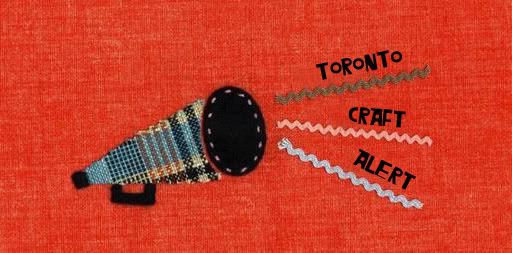




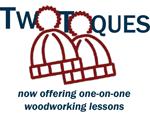

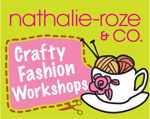


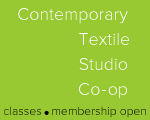

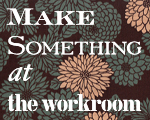



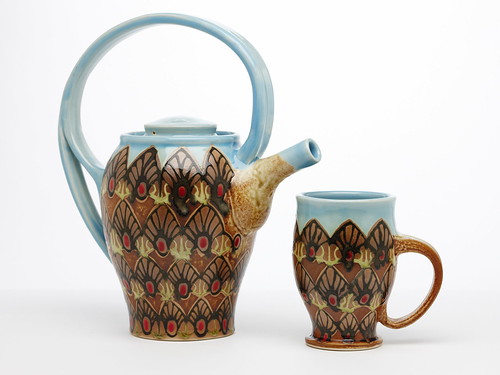
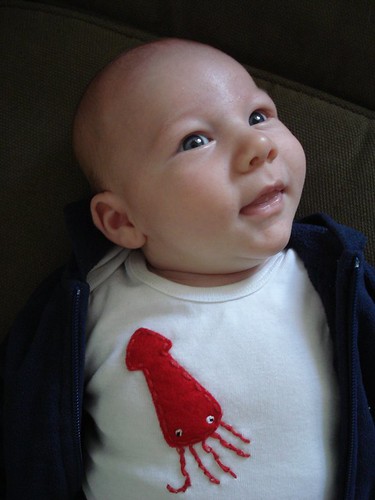

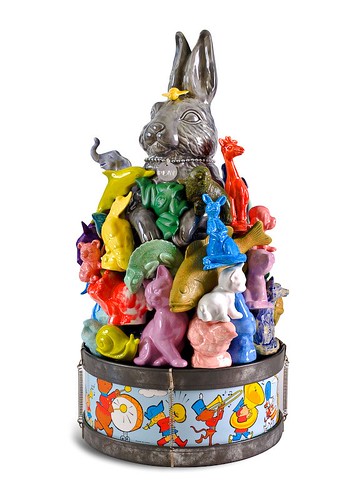

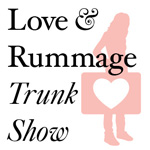




3 Comments:
This my second Xmas show at OOAK, ans as usual the feed back is fantastic. I make quilts and patchwork pillows/tea cosies; quilts are a product that 90% of people that stop either made , have a relative that makes or want to make. So, as they say..if only compliments were bankable...but the encouragment that fellow quilters shower on you is priceless. Making money from doing what you love would be fantastic!!! Having this great exposure is good for growth!!If you work hard at it and believe in yourself...it can work. Not every time, but enough to keep a lot of artisans productive and happy....help each other out as much as you can...enjoy the amasing creativity that surrounds us.PageQuilts T-21
This article was extremely interesting and helpful. I think you should continue doing articles on the OOAK and other tradeshow topics. ie. How to apply for and set up credit card machines and so forth.
i'm happy to answer any questions regarding ooak set up having been in rising stars twice and in my own booth twice
chantelle
littebrownwren@rogers.com
F-35
Post a Comment
<< Home